 William Harold Flowers
William Harold Flowers
Entry Category: Race
 William Harold Flowers
William Harold Flowers
Flowers, William Harold
 James Ford
James Ford
Forrest City Riot of 1889
Fort Smith Schools, Desegregation of
Foster, Thomas P. (Killing of)
Fox, Joseph (Joe)
Fox, Warren (Lynching of)
Franklin, Monroe (Lynching of)
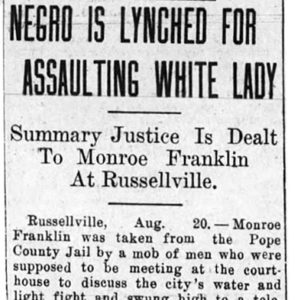 Monroe Franklin Lynching Article
Monroe Franklin Lynching Article
Frederick, Bart (Lynchings Related to the Murder of)
Freedmen’s Bureau
aka: Bureau of Refugees, Freedmen, and Abandoned Lands
Freedmen’s Schools
Freedom Centers, Houses, Schools, and Libraries
Freedom Rides
Furbush, William Hines
Gammon, John, Jr.
Gardner, Jeff (Lynching of)
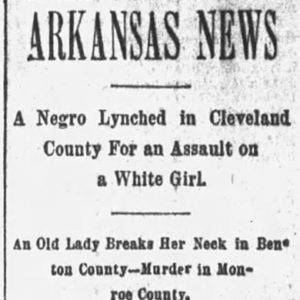 Jeff Gardner Lynching Article
Jeff Gardner Lynching Article
Garner, Margaret “Peggy”
Gary v. Stevenson
George (Lynching of)
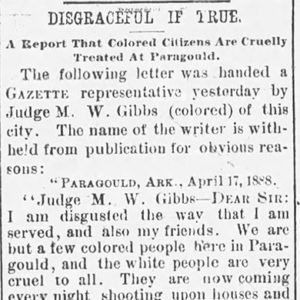 Gibbs Letter
Gibbs Letter
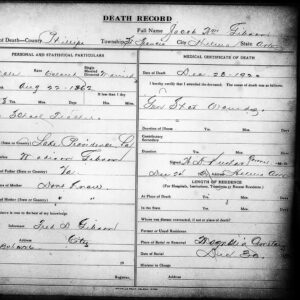 Gibson Death Record
Gibson Death Record
Gibson, J. W. (Murder of)
Gilbert, John (Lynching of)
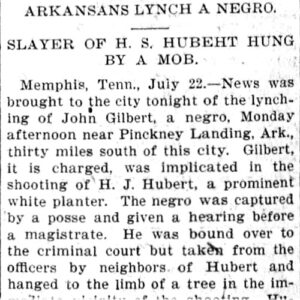 John Gilbert Lynching Story
John Gilbert Lynching Story
Giles, Albert
Gilmore, Felix (Lynching of)
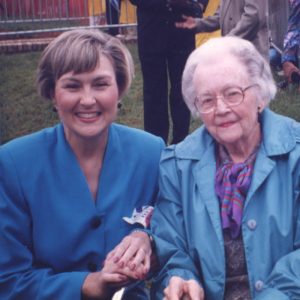 Gordy and Huckaby
Gordy and Huckaby
Gould, Godfrey (Lynching of)
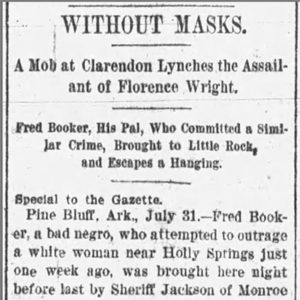 Godfrey Gould Lynching Article
Godfrey Gould Lynching Article
Graves, Levi (Lynching of)
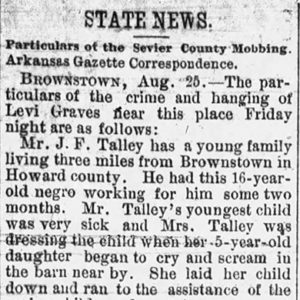 Levi Graves Lynching Article
Levi Graves Lynching Article
Green (Lynching of)
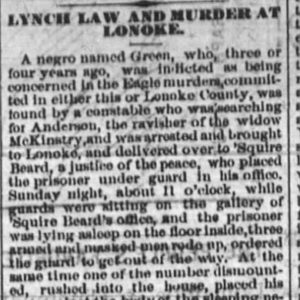 Green Lynching Article
Green Lynching Article
 Green Marker
Green Marker
Green, Carolyn Jean
 Carolyn Jean Green
Carolyn Jean Green
Green, Crane (Lynching of)
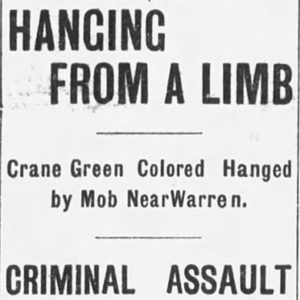 Crane Green Lynching Article
Crane Green Lynching Article
Green, Ernest Gideon
Green, Marlon DeWitt
Green, Steve
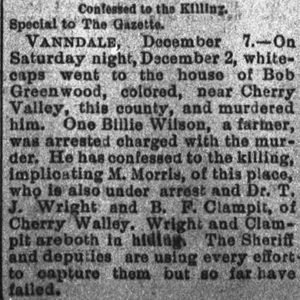 Bob Greenwood Lynching Article
Bob Greenwood Lynching Article
Greenwood, Bob (Lynching of)
Gregory, Dick (Arrest of)
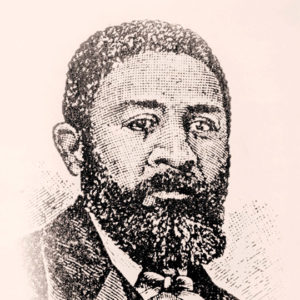 William H. Grey
William H. Grey
 William Henry Grey Gravesite
William Henry Grey Gravesite




